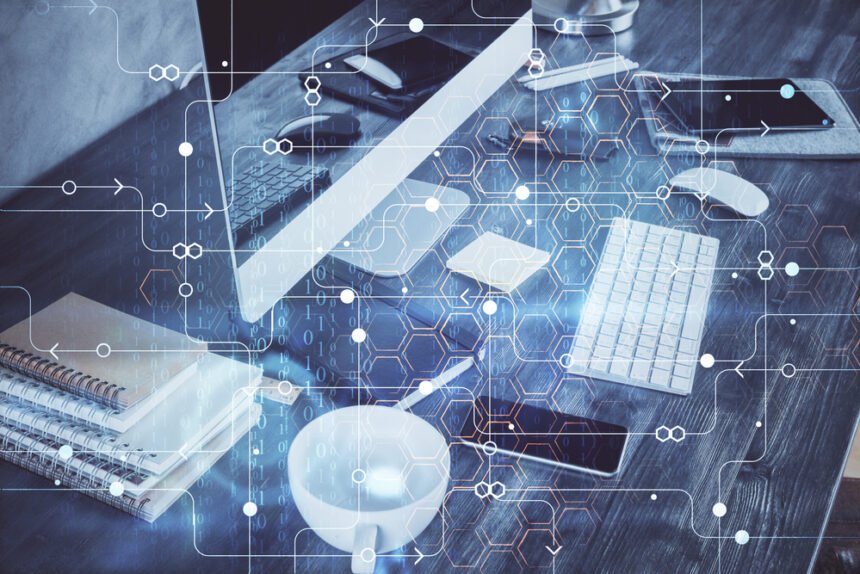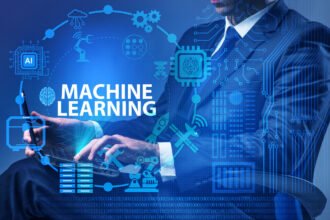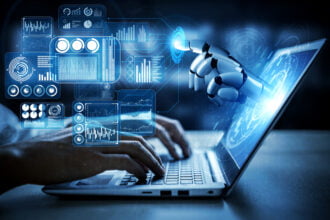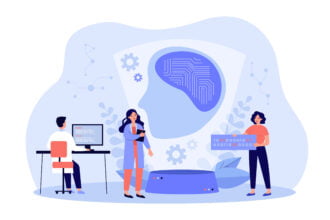Machine learning (ML) is an innovative tool that advances technology in every industry around the world. From the most subtle advances, like Netflix recommendations, to life-saving medical diagnostics or even writing content, machine learning facilitates it all.
Due to its constant learning and evolution, the algorithms are able to adapt based on success and failure. Then, they can help people in daily life.
Machine learning mimics the human brain. It entails deep learning from its neural networks, natural language processing (NLP), and constant changes based on incoming information. Of course, these algorithms aren’t perfect, but they become more refined with every interaction.
This form of learning is everywhere, in places you may not even know, which is part of what makes ML so integral to a range of professions and everyday tasks. These eight examples show how various industries use machine learning and how some may use it in the near future.
1. Construction Safety
Construction sites use technology in a multitude of ways, from communication to planning to equipment. However, machine learning is an underlying dynamic that can improve worker safety during the construction process.
As one of the most dangerous industries, there were 1,061 construction fatalities in 2019. Using ML can potentially reduce this number and prevent injuries, too.
Artificial intelligence (AI) systems, like one known as VINNIE, can process the safety of blueprints or images, then report back with areas to improve on. These systems are faster than humans and eliminate common errors.
Furthermore, predictive maintenance will show when equipment or a machine requires repairs or replacements. Fixing them will help prevent malfunctions or shutdowns that can result in workplace injuries or fatalities.
2. Consumer Recommendations
When you finish binging your favorite television show, Netflix pulls up another for you to start. This process uses machine learning. Based on your viewing history, your ratings, and your preferences, the system recommends similar content to engage you further.
A similar process occurs after you purchase or rate an item on Amazon.com or any other online shopping website. The algorithms learn based on your behavior and try to recommend products it thinks you will like.
Of course, ML is not always going to get its recommendations correct, but that’s not necessarily a bad thing. Even when the algorithms get it wrong, they’ll learn and adapt to be more accurate in the future. It all comes down to constant learning based on feedback.
3. Image Recognition
When it comes to automatically categorizing images, machine learning is the best in the game. Manually, it would take individuals countless hours to sort types of images into folders or tags. For instance, Google Images uses ML to instantly learn and categorize dogs based on features and similar photos.
Social media platforms use a similar technique. You may notice Facebook asking you to clarify if you are in a photo or if one of your friends is in your photos. This prompt helps the ML algorithms know what to look for when recognizing faces and contents of an image.
In other fields, image recognition ML can process a document or handwritten notes and automatically transcribe the content. This vast image recognition ability makes ML increasingly popular for mobile apps, like DocuScan.
4. Directions
Navigation and directions have come a long way since they began. From maps to online printouts to mobile apps, directions are now one of the most vital integrations of machine learning algorithms.
Apps like Google Maps, Apple Maps, and Waze actively use data from drivers. They collect information about location, driving speeds, feedback, holidays, construction, and accidents to learn about specific roads and areas. Then, the ML processes automatically calculate arrival times or find a faster route if necessary.
This dynamic creates a consistent, ongoing process of learning about traffic conditions in every situation. Apps then provide more and more accurate information for drivers.
5. Medical Diagnostics
The medical industry uses machine learning for diagnostic purposes. Practitioners can use image recognition in this step or use ML independently, too. With image recognition, ML can process CT scans or x-rays. Then, it can categorize the results based on historically similar scans.
Medical professionals can use ML algorithms to understand a patient’s history and current illness. Based on this information and similar cases, machine learning can help doctors plan out treatment paths and project how the condition will develop.
6. Language Processing
Language and speech recognition have become common uses of ML in everyday life. These two uses allow you to search by voice from your smartphone or your smart home hub. For instance, when you ask Siri to research something, this act uses language processing to learn and adapt. It can even take text and convert it into speech.
A similar feat happens when you interact with chatbots online. These bots use machine learning and NLP to understand your request. If you’re working with a banking chatbot and looking to open an account, the bot will process your words and then act based on similar instances.
Language processing systems must continue to develop and learn, since language and slang evolve constantly.
7. Equipment Monitoring
On work sites of any scale, it’s always critical that employees and managers track equipment. Machinery is valuable, and if it gets stolen or misused, staff must find a way to recover or fix it. Fortunately, ML can help with this process.
Newer camera systems can use machine learning to properly label the equipment on the work site. It can process and distinguish between tractors or cement mixers. Then, it can track them as they move about the site. If one breaks or goes missing, the system can show exactly where it was or what happened when the issue occurred.
8. Email Filtering
Email filtering is one of the most subtle uses of machine learning that people unknowingly benefit from every day. Filters automatically sort emails into inboxes or spam folders. With the recent increase of phishing scam emails, these filters are more important than ever.
Google, for instance, uses machine learning to process the contents and sender of an email. If it fits a history of spam similarities, the system knows to put it in your spam folder. However, when you mark items as spam manually, that also lets Gmail know to do the same to other emails from that sender.
Future Applications of Machine Learning
The above eight examples show where machine learning is today. Like all other areas of technology, ML still has plenty of room for improvement. Just as the human brain adapts and evolves based on new experiences and information, these algorithms must mimic that growth. There are already some developments that hint at what’s to come.
For construction and home improvement, two developments stand out in the field. First, predictive recommendations are a growing experiment. If ML can process blueprints and plans, it can analyze that data and then provide recommendations for workers on exactly what tools, materials, and machinery they’ll need for the process.
Second, autonomous vehicles are already coming into play. These vehicles use ML to navigate and operate. With the right integration, they could end up constructing buildings, homes, or structures themselves, without human assistance. They’d process the plans and use given materials to properly execute the tasks.
Elsewhere, the medical industry is also seeing some promising adaptations. Machine learning could take image recognition and treatment prediction a step further if it actively predicts who will get an illness. Taking into account family history, current health, and living conditions, ML could show doctors who may one day develop a condition, which gives them a headstart for potential treatment or prevention.
The Power of Machine Learning
Machine learning is one of the most highly adaptive and capable technologies of today. It helps countless industries across the world with critical tasks and even the mundane responsibilities that make daily life easier. With such power and practicality, ML is a game-changer.
From here, ML is only going to increase in use. The above examples are already changing the way people interact with their surroundings. What comes next will surely revolutionize the world.











